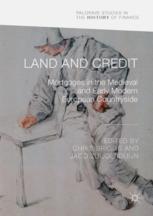

Most ebook files are in PDF format, so you can easily read them using various software such as Foxit Reader or directly on the Google Chrome browser.
Some ebook files are released by publishers in other formats such as .awz, .mobi, .epub, .fb2, etc. You may need to install specific software to read these formats on mobile/PC, such as Calibre.
Please read the tutorial at this link: https://ebookbell.com/faq
We offer FREE conversion to the popular formats you request; however, this may take some time. Therefore, right after payment, please email us, and we will try to provide the service as quickly as possible.
For some exceptional file formats or broken links (if any), please refrain from opening any disputes. Instead, email us first, and we will try to assist within a maximum of 6 hours.
EbookBell Team

5.0
38 reviewsThis volume investigates the use of mortgages in the European countryside between the thirteenth and eighteenth centuries. A mortgage allowed a loan to be secured with land or other property, and the practice has been linked to the transformation of the agrarian economy that paved the way for modern economic growth.
Historians have viewed the mortgage both positively and negatively: on the one hand, it provided borrowers with opportunities for investment in agriculture; but equally, it exposed them to the risk of losing their mortgaged property. The case studies presented in this volume reveal the variety of forms that the mortgage took, and show how an intricate balance was struck between the interests of the borrower looking for funds, and those of the lender looking for security. It is argued that the character of mortgage law, and the nature of rights in land in operation in any given the place and period, determined the degree to which mortgages were employed. Over time, developments in these factors allowed increasing numbers of peasants to use mortgages more freely, and with a decreasing risk of expropriation. This volume will be appealing to academics and researchers interested in financial history, credit and debt.